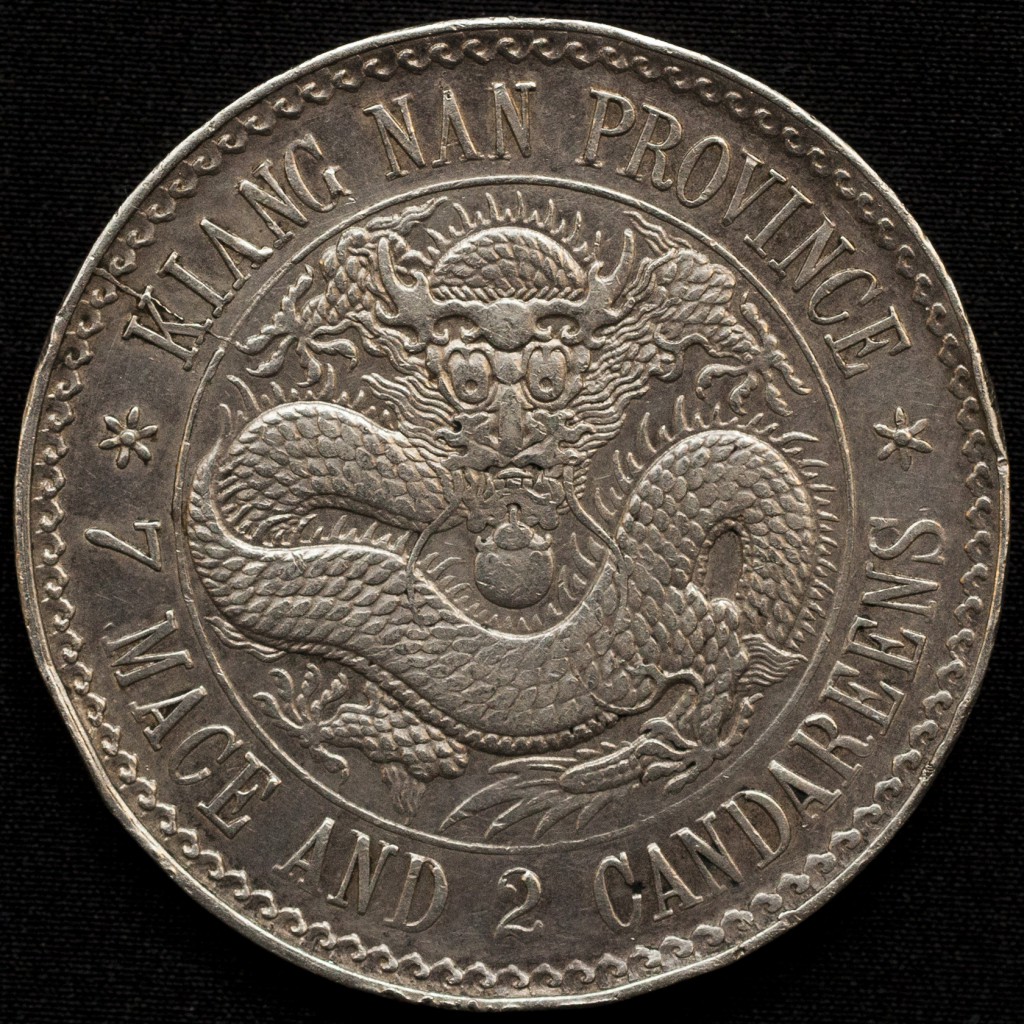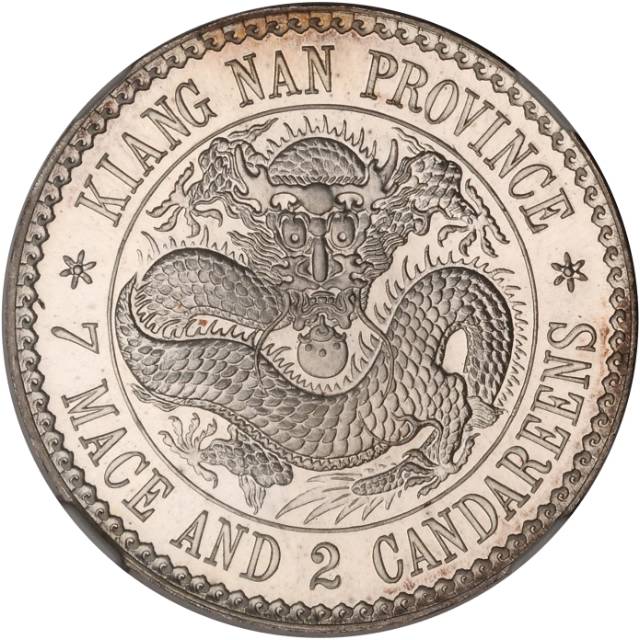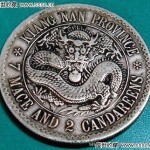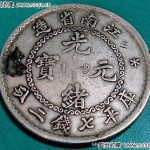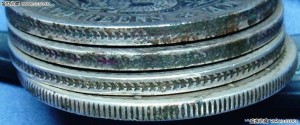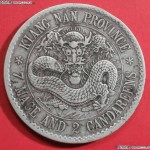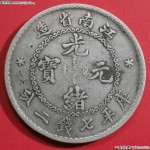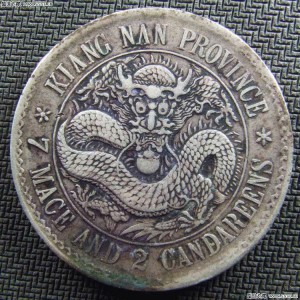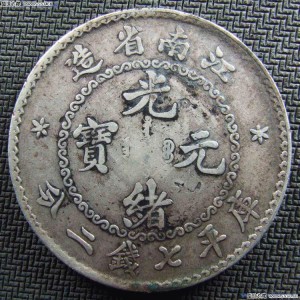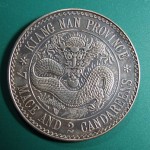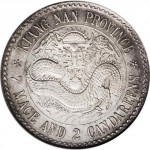The “Lao Kiang Nan” (老江南) silver coin is one of the most sought after chinese dragon dollars. The Heaton Mint at Birmingham was commissioned in 1897 to produce a series of five silver denominations for the Nanking Mint. Upon completion, a small number of proof strikes along with sets of dies were shipped to the mint in Nanking. After their arrival the mint began production using the original Heaton Mint design, the only modification being the addition of a security edge.
The first set minted by the Nanking mint for circulation, and the scarcest, has a reeded edge. The english legend has some distinctive differences: the weak crossbars of the “A” in “KIANG NAN” make them look like inverted “V”. Also, the calligraphy of the character 省 on the reverse was modified (the top of the 目 part of the character is open).
Subsequent strikes used an ornamented edge; this type is called 人字齿 or 人字边 by Chinese collectors, due to the pattern. The Lao Kiang Nan with an ornamented edge are far more common, and less expensive. You can see below a comparison of the edges of three ornamented edge Lao Kiang Nan, and one reeded edge:
Amongst the ornamented edge strikes, there is few known die differences. Even “common” Lao Kiang Nan coins are still quite scarce!
***
The ornamented edge Lao Kiang Nan is closer to the original design from the Heaton mint: the english lettering is identical, but the Chinese calligraphy used is the same than on the reeded edge. This is the most commonly found type of Lao Kiang Nan.
An early type of ornamented edge Lao Kiang Nan is much scarcer, with a reverse identical to the original Heaton design. It is called 人字齿目省 in China.
It is difficult nowadays to find uncirculated, even XF grade Lao Kiang Nan silver coins. Beautiful genuine coins are hoarded by collectors, so the market is saturated by fake or low grade coins. Outside of auction houses, finding a good looking reeded edge Lao Kiang Nan can be quite a challenge. The value of Qing era Chinese silver coins has soared in the recent years, and as one of the most coveted dragon dollar, the Lao Kiang Nan is no exception: an XF-45, uncleaned, reeded edge Lao Kiang Nan can be easily sold for 5000€.
The first modern, machine-struck silver coinage in China began in Guangdong in 1889. The new currency gaining in popularity, other provinces started to issue silver dollar coins. The Jiang Nan province (江南) was an early adopter and issued its first complete set of silver coins in 1897. This early set was minted in low quantities, with an original design which was quickly replaced by a more common one during the next two years. That makes the 1897 Kiangnan silver dollar a valued addition to a chinese dragon dollars collection. Sadly, the popularity of this coin amongst collectors made it a choice target for counterfeiters.
I recently saw a new kind of fake Lao Kiangnan coin floating around on online auction websites. It can easily be spotted by the little bumps around the rosette at the left of the dragon, and inside its coiled tail, as seen below.
Aside of the bumps, the coin is well struck and much more convincing than the usual crude forgeries found on these kind of websites. For comparison, here is what a real Lao Kiangnan looks like:
Any bumps on a machine struck coin should immediately raise suspicion; they are usually artifacts appearing during the process of casting. In this case, the coin is visibly struck, but most likely using a cast die – the bumps are the imprint of tiny bubbles trapped between the mold and the metal during the casting.
